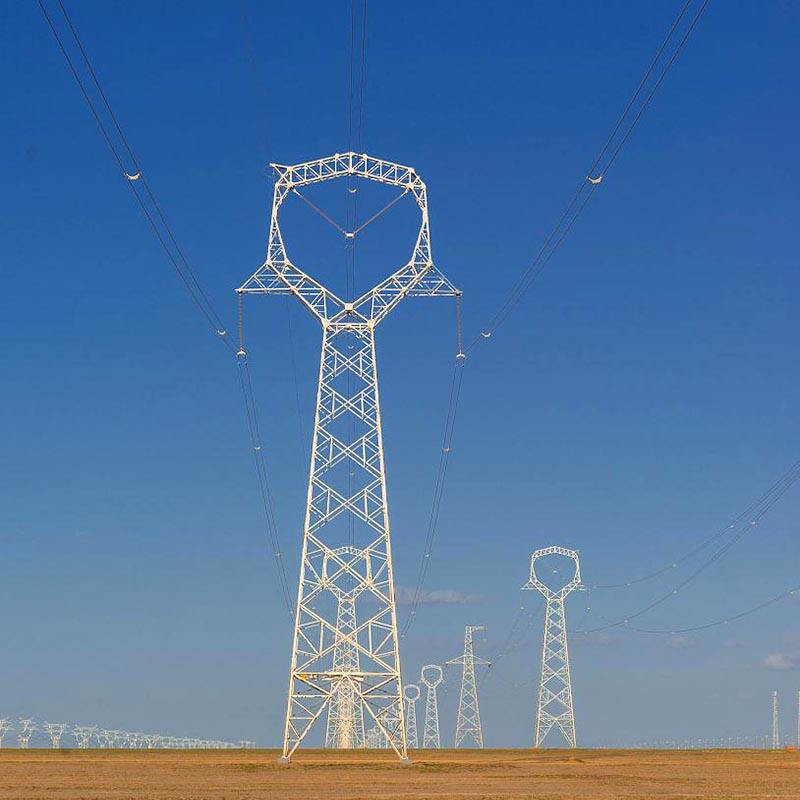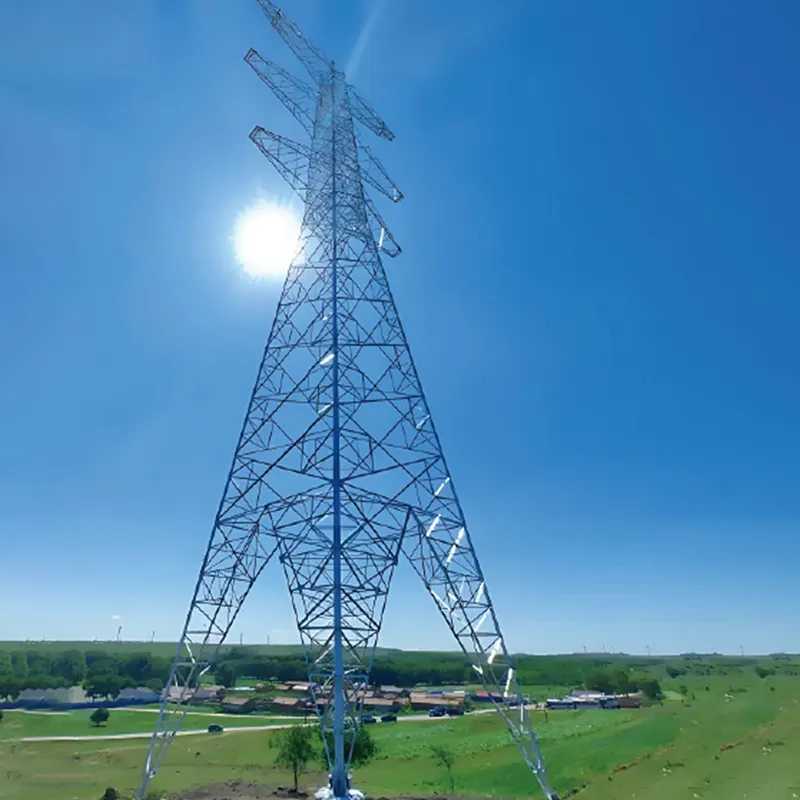송전 인프라에서의 엔지니어링 우수성
현대 전력망의 기반은 전기탑 에 사용되는 정교한 소재에 크게 의존하고 있습니다. 풍경 곳곳에 자리 잡고 안정적인 전력 공급을 보장하는 이 거대한 구조물들은 재료 선택이 내구성, 안정성 및 성능에 핵심적인 역할을 하는 엔지니어링의 걸작입니다.
전력 수요가 전 세계적으로 계속 증가함에 따라, 송전 탑 재료의 발전이 점점 더 중요해지고 있습니다. 엔지니어와 설계자들은 이러한 핵심 인프라 구성 요소를 위한 재료를 선택할 때 강도, 내구성, 비용 효율성 및 환경 저항성과 같은 요소들을 신중하게 균형 있게 고려해야 합니다.
송전 탑 건설에서 주요 구조 재료
아연도금강: 전력 분배의 핵심
아연도금강은 송전 탑 건설에서 가장 널리 사용되는 재료로, 뛰어난 강도와 부식 저항성을 동시에 제공합니다. 아연 도금 공정은 강철 위에 아연 보호 층을 입히는 과정으로, 녹 발생과 환경적 열화에 대해 장기간 보호 기능을 제공합니다.
현대적인 전기 탑 설계는 일반적으로 특정 강도 요구 사항을 충족하는지 확인하기 위해 철저한 테스트를 거치는 고품질의 강철을 사용한다. 이 소재의 높은 인장 강도 덕분에 탑은 강풍과 얼음 하중과 같은 극한의 기상 조건에서도 구조적 무결성을 유지하면서 견딜 수 있다.
알루미늄 합금: 경량화 혁신
알루미늄 합금은 특히 중량이 중요한 요소인 지역에서 전기 탑 건설에 널리 사용되고 있다. 이러한 합금은 뛰어난 강도 대비 무게 비율을 제공하여 원격지 또는 접근이 어려운 장소에 설치하는 데 이상적이다.
알루미늄의 자연적인 부식 저항성은 유지보수 필요성을 줄여주며, 뛰어난 전도성 덕분에 특정 탑 구성 부품에 특히 적합하다. 전기 탑 재료에 사용되는 현대 알루미늄 합금은 구조적 특성과 내구성을 향상시키기 위해 특정 원소를 포함하고 있다.

현대 탑 설계에서의 첨단 복합재료
섬유 강화 폴리머
섬유강화폴리머(FRP)의 통합은 전기 탑 재료 분야에서 중요한 발전을 의미한다. 이러한 복합재료는 강화 섬유의 강도와 폴리머 매트릭스의 내구성을 결합하여 뛰어난 성능 특성을 제공하는 재료를 만들어낸다.
FRP 부품은 환경적 요인에 대한 뛰어난 저항성과 함께 필요한 전기 절연 특성을 제공한다. 경량성과 유지보수 필요성이 극히 적다는 장점 덕분에, 특히 부식 저항성이 중요한 해안 지역에서 현대 탑 설계에 점점 더 널리 사용되고 있다.
탄소 섬유 복합재
탄소섬유 복합재는 전기 탑 재료 기술의 최첨단을 대표한다. 이 첨단 소재는 전례 없는 높은 강도 대 중량 비율과 우수한 환경 스트레스 저항성을 제공한다. 현재는 비용 문제로 인해 사용이 제한적이지만, 향후 응용 가능성이 매우 크다.
전략적 위치에 탄소섬유 부품을 통합하면 탑의 성능을 크게 향상시키고 전반적인 유지보수 요구사항을 줄일 수 있다. 뛰어난 피로 저항성과 열 안정성 덕분에 온도 변화가 극심한 지역에서 특히 유용하다.
기초 및 지지 재료
보강 콘크리트 기초
전기 탑에 사용되는 기초 재료는 구조적 안정성을 보장하는 데 중요한 역할을 한다. 고응력 적용을 위해 특별히 설계된 철근 콘크리트는 대부분의 탑 기초를 구성하는 핵심이다. 최신 콘크리트 혼합물은 내구성과 환경 요인에 대한 저항성을 향상시키기 위해 첨단 첨가제를 포함한다.
엔지니어들은 현지 토양 상태, 환경적 요인 및 하중 요구 조건에 따라 콘크리트 조성을 신중하게 선택한다. 철근의 통합은 인장 강도를 향상시키며, 특수 첨가제는 화학적 열화 및 동결-해빙 사이클에 대한 저항성을 개선한다.
접지 및 보호 재료
전기 탑의 접지 시스템 및 첨뢰 보호 장치에서 구리와 구리 합금은 필수적인 재료로 사용됩니다. 이러한 재료는 우수한 전도성과 내식성을 제공하여 전기적 결함 및 번개 충격에 대한 신뢰할 수 있는 보호를 보장합니다.
현대의 접지 시스템은 전도성을 향상시키면서 장기적인 안정성을 유지하도록 설계된 첨단 소재를 포함합니다. 이러한 소재의 선택은 토양 화학, 수분 수준 및 지역별 번개 발생 빈도와 같은 요소들을 고려합니다.
환경적 고려사항 및 향후 트렌드
지속 가능한 재료 솔루션
전력 산업은 점점 더 전기 탑 재료 선정 시 지속 가능성을 강조하고 있습니다. 재활용 강철 함량, 친환경 코팅 시스템 및 환경 영향을 줄인 재료들이 주목받고 있습니다. 제조업체들은 성능을 유지하면서 생태적 발자국을 줄일 수 있는 혁신적인 솔루션을 개발하고 있습니다.
생분해성 코팅 및 친환경 처리 공정에 대한 연구가 계속되고 있으며, 이러한 기술은 미래에 전기 탑 자재를 다루는 방식을 혁신할 수 있다. 이러한 개발은 환경적 책임과 구조적 요구사항 간의 균형을 맞추는 것을 목표로 한다.
스마트 소재 및 모니터링 시스템
스마트 소재와 모니터링 시스템의 통합은 전기 탑 기술의 차세대 프론티어를 나타낸다. 이러한 첨단 소재는 구조적 무결성, 응력 수준 및 환경 조건에 관한 실시간 데이터를 제공하여 능동적인 유지보수와 향상된 안전 절차를 가능하게 한다.
새로 등장하는 기술에는 자가 치유 소재와 변화하는 환경 조건에 반응할 수 있는 적응형 구조물이 포함된다. 이러한 혁신은 전기 탑의 유지보수 및 관리 방식을 혁신할 것으로 기대된다.
자주 묻는 질문
현대 전기 탑 자재의 일반적인 수명은 얼마인가?
현대의 전기 탑 재료, 특히 아연도금 강재 구조물은 일반적인 조건에서 대개 40~50년의 설계 수명을 가집니다. 그러나 적절한 유지보수 및 보호 시스템을 통해 많은 탑들이 이 수명을 안전하게 초과할 수 있습니다. 복합재료와 같은 첨단 소재는 더욱 긴 사용 수명을 제공할 수 있지만, 장기적인 데이터는 여전히 수집 중입니다.
환경 요인이 전기 탑의 재료 선택에 어떤 영향을 미칩니까?
습도, 극한 온도, 염분 노출 및 오염 수준과 같은 환경 요인은 재료 선택에 상당한 영향을 미칩니다. 기술자들은 재료를 선택할 때 지역 기후 조건, 부식 가능성 및 환경적 스트레스 요인을 고려해야 하며, 이로 인해 특정 환경적 도전 과제에 맞게 설계된 특수 코팅 시스템이나 재료 조합이 자주 사용됩니다.
유지보수 요구 사항이 재료 선택에서 어떤 역할을 합니까?
전기 탑재 자재를 선택할 때 유지보수 고려 사항은 매우 중요합니다. 일부 자재는 초기 비용이 더 높을 수 있지만, 유지보수 필요성이 적어 수명 주기 동안의 총비용이 낮아질 수 있습니다. 최근의 자재 선정은 원격지 또는 접근이 어려운 지역에서 특히 중요하게 여겨지는 내구성과 최소한의 유지보수 요구를 우선시하는 경향이 있습니다.

